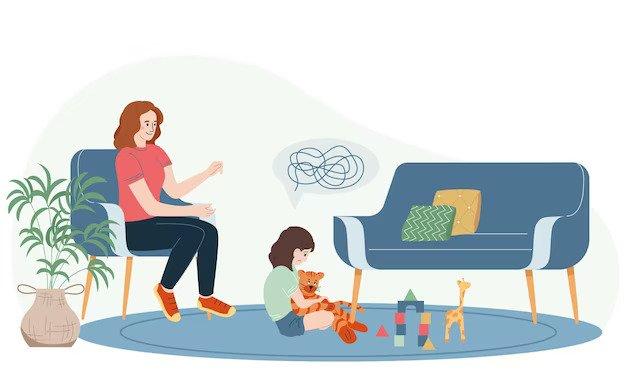Childhood is a crucial stage of life because it is during this time that we are learning social and emotional skills that will help us deal with adolescence and adulthood. Children, like adults, can benefit from support and counseling at any time to help with this development. Children, too, can experience more intense moments of distress or develop mental health disorders that call for additional support.
Children can benefit from play therapy, a type of psychotherapy, to work through their emotional and mental problems. Play therapy makes use of the way that children express themselves and learn about the world through play. Children are typically treated with play therapy. However, it also works for adults. Children between the ages of three and twelve are the typical target audience.
In a free and secure setting where they feel most at ease expressing them, a person will be guided through play therapy by a play therapist. Play therapists use games, dancing, and other activities that children might enjoy. Sometimes a play therapist will invite additional family members, parents, or guardians to participate in the playtime activities.
Types of Play therapy
Play therapists typically employ one of two types of play therapy:
Directive Play Therapy: Play therapy that is directive involves the therapist getting hands-on and guiding the child through activities that will help those expresses themselves. Usually, they’ll give the child clear instructions and watch over them as they follow them.
Non-directive Play Therapy: This type of play therapy uses a less regimented setting. The therapist largely refrains from interfering as the child expresses themselves through play and whatever activities they may enjoy.
Techniques
Play therapy allows for the application of a wide range of techniques. The approach taken during a therapy session is largely determined by your child’s needs and the play tools they are most at ease with.
A typical 30- to 45-minute play therapy session usually lasts. The therapist will make a welcoming and secure environment for the child to play in during a play therapy session. After that, the therapist will watch as the kid plays with the provided toys.
More specialized play activities that focus on the problems the child is facing will be introduced as the child becomes more at ease in the playroom of the therapist. Play therapists all over the world employ a variety of methods, some of which are as follows:
- Building with blocks
- Making use of the arts
- Play board games with sand
- Have some doll fun
- Puppet show
- Playing tea party
- Play cards
- Strategy games like chess or checkers
- Hide-and-seek
- A LEGO game
- Storytelling
- Dance and movement
A child with behavioral or mental health symptoms is assessed and treated by child counselors using a variety of techniques. Parents or families frequently participate in sessions, either completely or in part. You might be surprised to learn that the counselor engages your child in games or incorporates art projects into a session. Even though they may seem like child’s play, these activities can offer your child insights and interventions when carried out by a trained professional.
Therapeutic Games
A child can learn self-management techniques through specific games and activities. An example would be a counselor and a child blowing bubbles together. The counselor shows the child how to blow larger bubbles by taking slow, deep breaths while they are having fun with bubbles.
Art Therapy
Counselors may assign a child a task for diagnostic purposes, such as copying, coloring, or drawing instructions for a specific object, such as an animal or the child’s family. Other times, a child is given the freedom to express themselves freely through their choice of art medium and subject matter. Counselors analyze children’s artwork by seeking out themes and getting the kids to talk about their work.
Family Therapy
Problem-solving strategies can be found in family interactional patterns and dynamics. Children and families engage in more spontaneous and creative interaction through activities than they would through traditional talk therapy. Using this method, a child makes a living sculpture by having family members sit, stand, kneel, or take any other position in the space that best depicts how they interact with one another. The counselor talks to the child about the sculpture before asking him to arrange his family members in the way he prefers.
Speech therapy
Children who have endured trauma, such as physical or sexual abuse or the loss of a loved one, benefit from talk therapy. A counselor uses narrative therapy to focus on the child’s reaction to the traumatic event after the child has described the event.
How to Get Started
If you have a child or know someone who might benefit from play therapy, you should start by speaking with a licensed psychologist or psychotherapist who has experience working with children. Psychowellness Center offers india’s best play therapy, and TalktoAngel provides online counseling and child therapy.
If you’re looking for an “Online counseling,” TalktoAngel is a platform that connects you with the best online therapists and “Online counsellor.”




